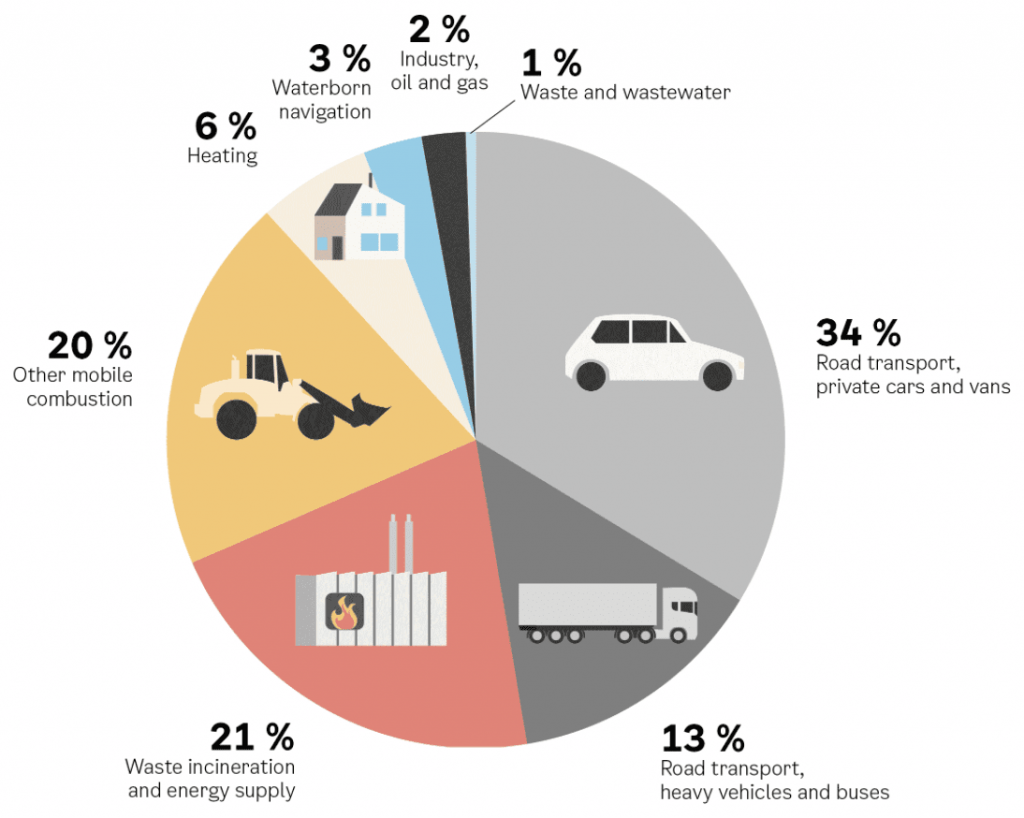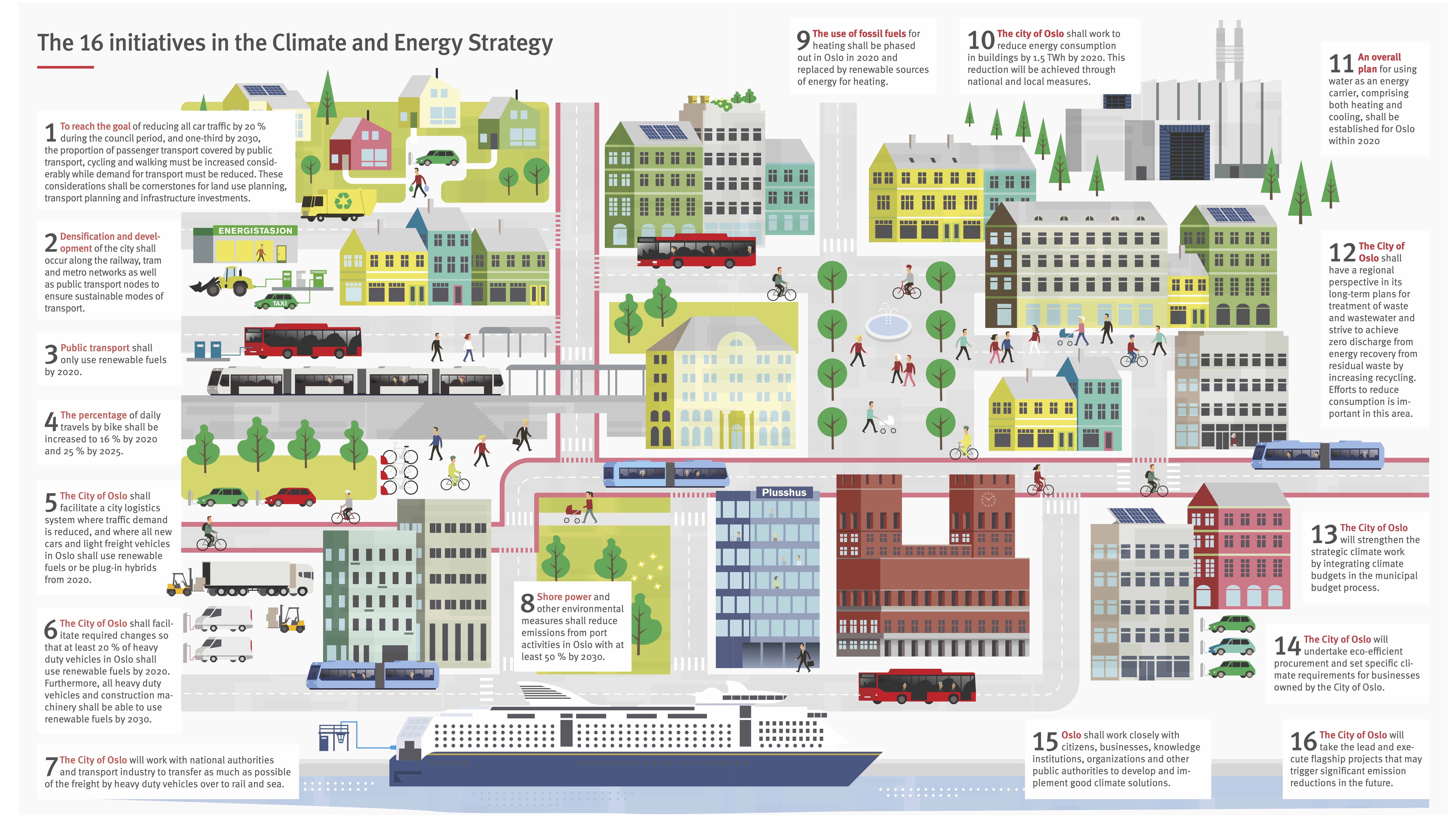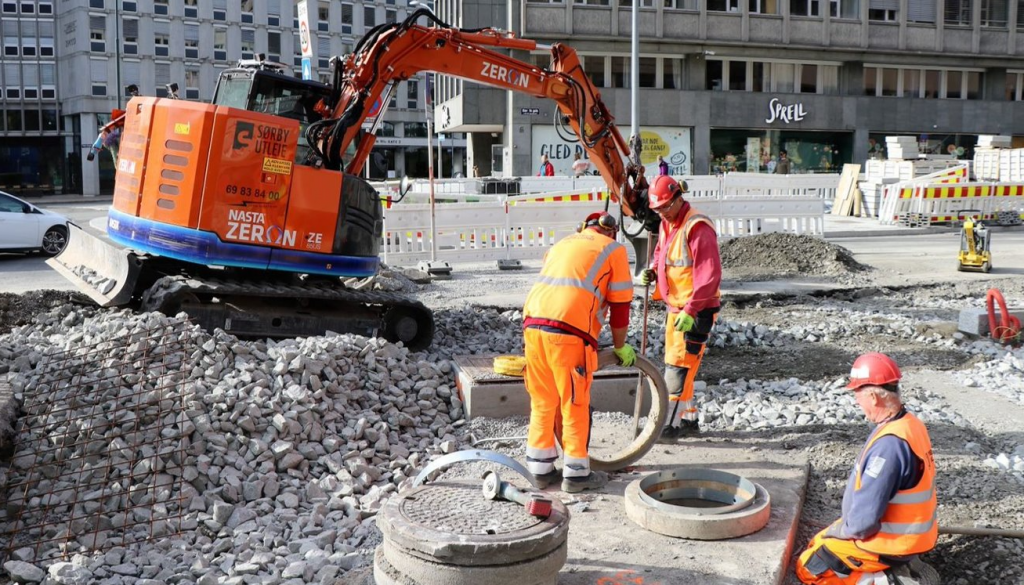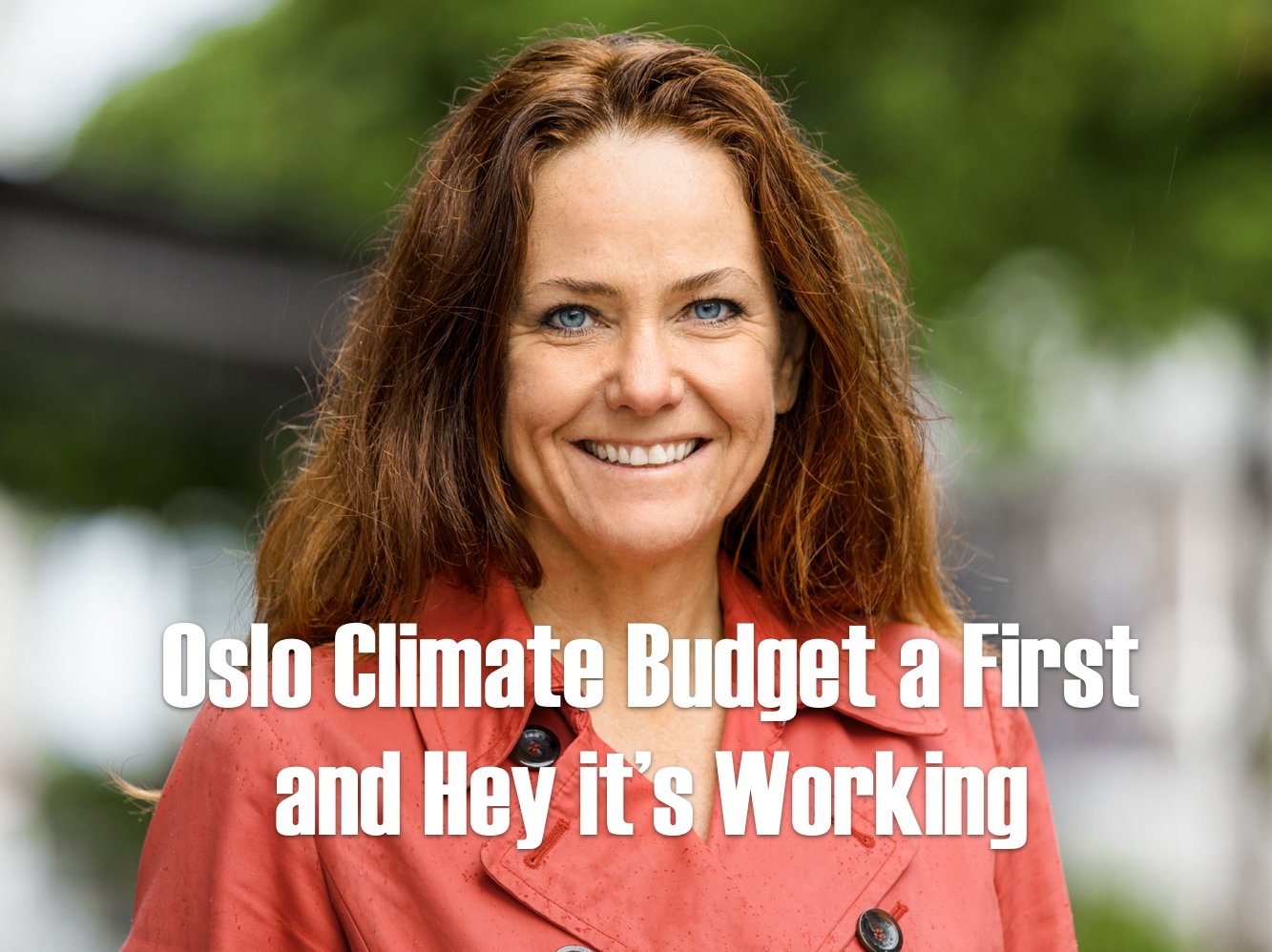By David Dodge, GreenEnergyFutures.ca
Talk is cheap and there has been a long line of climate plans with lofty goals and a lack of action, but Oslo, Norway is bucking this trend. The city has a climate budget and a climate agency and is taking the boots to climate emissions.
“My task is to [make] sure that the city reduces its climate emissions by 95% by 2030,” says Heidi Sorensen, head of the Oslo Climate Agency.
Oslo invented the idea of a city climate budget, not as a symbolic gesture but as a budget managed alongside the fiscal budget and managed by the City’s Deputy Mayor of Finance.
City managers learned early on just how serious Oslo is about fighting climate change.
The climate budget was launched in 2016 and city managers quickly learned that if their initiatives helped the climate there was a much greater chance their initiatives would get funded.
Sorensen says in terms of sticks and carrots winning in the budget process is a carrot.
“The mindset has more or less changed, people are so proud of the climate measures, even if it is in municipal graveyards that has all the electrical machines.”
Yup, even the municipal managers of graveyards have caught the spirit help electrify their own heavy equipment.


So where do Oslo’s emissions come from?
Today 47% of emissions come from cars and trucks on the roads in Oslo, waste incineration produces 21% while construction produces 20% says Sorensen.
If that seems like a weird mix of emissions, hold on. For perspective Edmonton, the most northerly big city in North America gets one third of its emissions from each of transportation, buildings, and industry, but thanks to way percentages work this all changed in Oslo.
“When I started six years ago there used to be a lot of emissions from the heating sector [buildings],” says Sorensen but since they phased out fossil fuel heating in 2019 emissions from heating buildings and replaced it with heat pumps, solar and biomass emissions have plummeted to just 6%.
So when Oslo reduced it’s heating emissions transportation emissions didn’t go up, but they became a bigger proportion of the mix – that’s how percentages work.
But still you might be thinking ‘gee whiz, transportation looks like a big problem in Oslo.’

Oslo’s electric vehicle revolution
“The numbers we see now when it’s come to electrification on the transportation sector are very encouraging.” Indeed, this month 82% of all new passenger car sales in Norway are electric and 36% of the sale of small trucks (vans) sales are electric as well. These are the highest adoption rates in the world and remember this is coming in a major oil producing nation.
They are also making good progress electrifying heavy equipment used in construction.
Norway uses a suite of carrots and sticks to encourage EVs. They charge higher taxes on higher emission cars and forgive the VAT and Norway’s high purchase tax on the purchase of EVs. They also offer electric vehicle owners cheaper ferry rides, lower tolls on roads, free parking, and a host of other incentives. Oslo, like many European countries have signalled they would like to eliminate combustion engines from their streets as early as 2030.

Waste incineration solutions
The one emissions issue that left us scratching our heads was waste incineration.
Norway banned landfills in 2009 and they turned to incineration. Now Sorensen says they are investing in carbon capture and storage to capture 90% of those emissions and they are also investing in a waste to energy project, pending EU funding, to make waste management carbon negative.
If you have been keeping mental tabs on Oslo’s chart of emissions (above) it becomes clear Oslo is on the pathway to reduce emissions in every significant category. There was a setback in 2021, but Oslo’s new climate budget projects 71% reduction in emissions by 2024.
For the most part there is public and political support for action in Norway and Sorensen says “I think the climate discussion has too long been about sacrifice.”
She says it’s much better to frame climate actions as creating better cities and a better quality of life.
Heidi Sorensen’s Ted Talk on Oslo Climate Action is entitled “5 Lessons on building an emissions’s free city,” and she has given several presentations to C40 Cities on climate action in cities.

